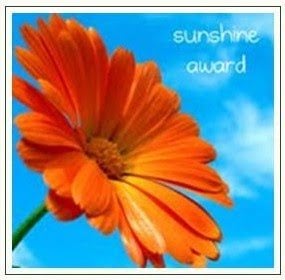Thanks a Million
A few days ago the Chicago Tribune ran a story about how 14,000 Chicago gardens had been registered with the Million Pollinator Garden Challenge, contributing to the total of 1,040,000 gardens registered since 2015 when the challenge was launched. Actually, the press release announcing this achievement came out on February 26th, so it’s not exactly breaking news.

Even so, I’ll call this an encouraging development. It’s easy to roll one’s eyes over this sort of project. Anyone can register their property as a pollinator garden, even if it’s just a slab of concrete, and nobody is going to check.
And the pollinator crisis won’t be solved without new government policies on things like pesticides and habitat destruction, which means overcoming the resistance of various industries.

Still, there’s evidence that private gardens can significantly add to pollinator abundance and diversity. And popular education is important for influencing both consumer demand and legislative action.
The Million Pollinator Garden Challenge was sponsored by the National Garden Pollinator Network, which is an alliance of conservation and gardening organizations, along with some government agencies.

According to the Network, a pollinator garden should:
- use plants that provide nectar and pollen
- provide a water source
- have plenty of sun and protection from the wind
- create big patches of blooming plants attractive to pollinators
- have continuous bloom throughout the growing season
- avoid pesticide use
While the Network encourages native plants, they are not pushed exclusively. In the Chicago Tribune article, spokespeople mention 3 examples of pollinator plants (Aster, Penstemon, and “upright Sedum”), but only 2 of those 3 are native to the Chicago area.

The Network’s next focus is to promote the idea that gardens should have at least three “pollinator plants” blooming in each season, and also to encourage participation in citizen science projects that document the health of pollinator populations. I kind of wish they would try for 5 million pollinator gardens, or at least 2 million.
Efforts like these are not the whole answer by any means, but they should certainly be part of the solution. So good for them.
Incidentally, the title to this post comes from the name of a song by (I think) Louis Armstrong. Give it a listen if you like.





I can’t remember all the details, but there are groups in this area who developed what they call pollinator pathways. Taking into consideration the distance various bees and other insects will travel, they plotted gardens in such a way that the insects could travel from one to another. It was a complex endeavor, with a lot of education and persuasion involved, but businesses and homeowners committed to the project, and they’re having continued success.
Yes, there’s something similar here, but they are called pollinator corridors.
Sounds a really good idea, I can tick each one of your check list, such a pity I’m so far away! There are similar schemes over here, but not so organised.
I’m not surprised that your garden would qualify. They do register gardens outside the US, for what it’s worth.
Such an inspiring campaign. The results sound promising.
Your photos are gorgeous. 🙂
Thank you!
Thanks a million for your participation. Your garden would be an inspiration to anyone with the urge to participate. It is encouraging news.
And encouraging news isn’t always easy to find.
I just signed up! I’ve had mine available for 14 years. I love just sitting and watching them all come to my all-inclusive resort 😉
I know what you mean – definitely the high point of my day.
Very inspiring. And although my yard is probably too shady to qualify, I do have a fair number of plants that attract pollinators. Thanks to you for being such an inspiration. Also, wonderful song.
It is a great song, isn’t it?
Sure is!
Every little bit helps, and we definitely cannot discount the impact that private gardens have on pollinator populations. Fly over most cities, especially the suburb areas and gardens usually dominate the landscape – what difference it would make if everyone took a small section of grass and planted up a few pollinator attracting perennials.
That’s what I think. There must be millions of acres of lawn in North America.
I haven’t heard of exactly that here but I do see a lot of ads for pollinator workshops.
Well, that sounds positive.
No doubt that quantity of pollinators is getting less every year, Jason. In my garden I see many wasps and I’m not happy because they are aggressive to bees. Although there are many flowering plants there.
I hope your wasps and bees learn to cooperate.
It will hopefully make a difference, five million even more so! Lovely insects, especially the black one.xxx
Seems like it should make a positive difference.
Thanks for the info, I hadn’t seen this before. I love citizen science projects so I’ll be signing up both my gardens (in IL and WI) and use their hints to get even better conditions for attracting and helping pollinators.
I also would like to do more citizen science. Lucky you with gardens in IL and WI!